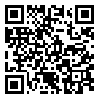Volume 67, Issue 10 (1-2010)
Tehran Univ Med J 2010, 67(10): 705-711 |
Back to browse issues page
Download citation:
BibTeX | RIS | EndNote | Medlars | ProCite | Reference Manager | RefWorks
Send citation to:



BibTeX | RIS | EndNote | Medlars | ProCite | Reference Manager | RefWorks
Send citation to:
Jaffary F, Nilforoushzadeh M A, Ansari N, Rahimi M. Treatment of cutaneous leishmaniasis: cassia fistula fruit gel- intralesional glucantime Vs. placebo gel- intralesional glucantime combination. Tehran Univ Med J 2010; 67 (10) :705-711
URL: http://tumj.tums.ac.ir/article-1-5593-en.html
URL: http://tumj.tums.ac.ir/article-1-5593-en.html
1- Department of Pharmacology and Toxicology, School of Pharmacy, Isfahan University of Medical Sciences. , Jaffary@pharm.mui.ac.ir
2- Center for Research and training in Leprosy and Skin Diseases, Department of Dermatology, Tehran University of Medical Sciences.
3- Skin Diseases and Leishmaniasis Research Centre, Isfahan University of Medical Sciences.
2- Center for Research and training in Leprosy and Skin Diseases, Department of Dermatology, Tehran University of Medical Sciences.
3- Skin Diseases and Leishmaniasis Research Centre, Isfahan University of Medical Sciences.
Abstract: (10121 Views)
Background: Cutaneous leishmaniasis is a major health problem in Iran and especially Isfahan province is considered as an endemic area for this disease. Regarding the previous report of positive effects of Cassia fistula boiled extract in the treatment of cutaneous leishmaniasis, this study was designed to evaluate the effect of combination therapy with intralesional meglumine antimoniate and Cassia fistula fruit gel compared to placebo in this disease.
Methods: 140 patients with cutaneous leishmaniasis referring to Skin Disease and Leishmaniasis Research Center of Isfahan (SDLRC) were randomly allocated in two groups. One group received intralesional meglumine antimoniate injection and Cassia fistula fruit gel and the second group were treated with intralesional meglumine antimoniate and placebo gel. Improvement was defined as complete cure, partial cure and treatment failure.
Results: At 12 week, 47 patients treated with intralesional meglumine antimoniate and topical Cassia fistula fruit gel achieved complete cure (67.1%) compared to 29(41.4%) patients in placebo treated group. There was significant difference in cure rate between two treatment groups of this study (p<0.001). Nine patients (19%) in each group suffered from adverse effects of the treatment such as itching and erythema. There was no significant difference in this regard between two groups (p=0.82).
Conclusions: The results of this study shows the efficacy of Cassia fistula fruit gel in increasing the cure rate of cutaneous leishmaniasis lesions achieved by intralesional meglumine antimoniate. Combination therapy of intralesional meglumine antimoniate and Cassia fistula fruit gel could be suggested as a choice for the treatment of acute cutaneous leishmaniasis lesions.
Methods: 140 patients with cutaneous leishmaniasis referring to Skin Disease and Leishmaniasis Research Center of Isfahan (SDLRC) were randomly allocated in two groups. One group received intralesional meglumine antimoniate injection and Cassia fistula fruit gel and the second group were treated with intralesional meglumine antimoniate and placebo gel. Improvement was defined as complete cure, partial cure and treatment failure.
Results: At 12 week, 47 patients treated with intralesional meglumine antimoniate and topical Cassia fistula fruit gel achieved complete cure (67.1%) compared to 29(41.4%) patients in placebo treated group. There was significant difference in cure rate between two treatment groups of this study (p<0.001). Nine patients (19%) in each group suffered from adverse effects of the treatment such as itching and erythema. There was no significant difference in this regard between two groups (p=0.82).
Conclusions: The results of this study shows the efficacy of Cassia fistula fruit gel in increasing the cure rate of cutaneous leishmaniasis lesions achieved by intralesional meglumine antimoniate. Combination therapy of intralesional meglumine antimoniate and Cassia fistula fruit gel could be suggested as a choice for the treatment of acute cutaneous leishmaniasis lesions.
Keywords: Cutaneous leishmaniasis, meglumine antimoniate, Cassia fistula fruit gel, placebo, intralesional injection
Send email to the article author
| Rights and permissions | |
 |
This work is licensed under a Creative Commons Attribution-NonCommercial 4.0 International License. |





